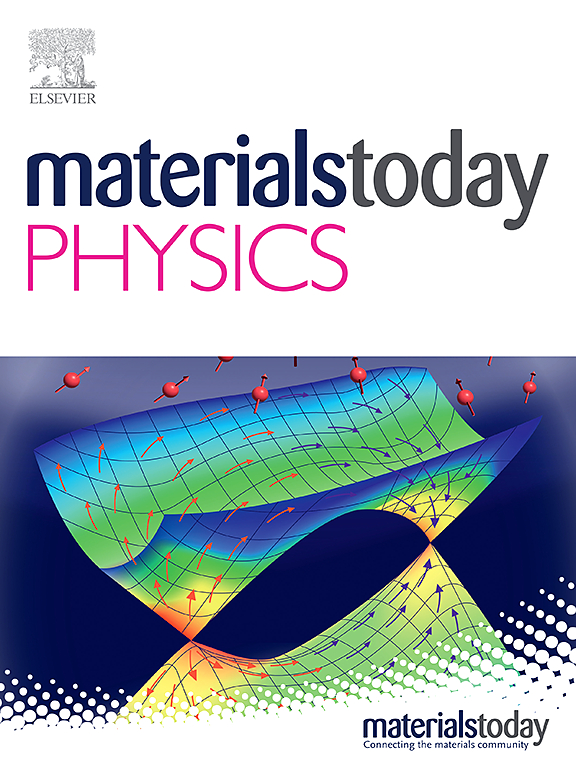Low-field-driven giant magnetocaloric effect in KGdF4 for sub-Kelvin cryogenic refrigeration
IF 9.7
2区 材料科学
Q1 MATERIALS SCIENCE, MULTIDISCIPLINARY
引用次数: 0
Abstract
Magnetic refrigeration is a promising technology capable of achieving sub-Kelvin temperatures without using 3He. However, conventional magnetocaloric materials suffer from drawbacks such as high driving magnetic fields, low magnetic entropy change (ΔSM), and structural instability, limiting their practical application. In this work, KGdF4 with different crystal structures was synthesized, and the structure dependence of the magnetocaloric effect (MCE) was investigated. Notably, in the cubic KGdF4 (C-KGdF4), the chemical disorder of Gd3+/K+, increases the Gd3+-Gd3+ distance and weakens the dipolar interactions, and thus leads to a large -ΔSM = 30.5 J kg−1 K−1 at 1.3 K at the magnetic field change of 10 kOe, which is more than three times of that of the commercial Gadolinium Gallium Garnet (Gd3Ga5O12, GGG) under the same conditions. Furthermore, the magnetic ordering temperature of 0.6 K of the C-KGdF4 is lower than most reported Gd-based magnetocaloric materials. These excellent magnetocaloric performances suggest that C-KGdF4 is a highly promising candidate for ultra-low-temperature magnetic refrigeration.


亚开尔文低温制冷中KGdF4的低场驱动巨磁热效应
磁制冷是一项很有前途的技术,能够在不使用3He的情况下实现亚开尔文温度。然而,传统的磁热材料存在高驱动磁场、低磁熵变化(ΔSM)和结构不稳定等缺点,限制了它们的实际应用。本文合成了具有不同晶体结构的KGdF4,并研究了磁热效应(MCE)的结构依赖性。值得注意的是,在立方KGdF4 (C-KGdF4)中,Gd3+/K+的化学无序性增加了Gd3+-Gd3+的距离,减弱了偶极相互作用,从而在10 kOe的磁场变化下,在1.3 K下产生了巨大的-ΔSM = 30.5 J kg-1 K-1,是相同条件下商用钆镓石榴石(Gd3Ga5O12, GGG)的3倍以上。此外,C-KGdF4的磁有序温度为0.6 K,低于大多数已报道的gd基磁热材料。这些优异的磁热性能表明,C-KGdF4是极有希望用于超低温磁制冷的候选者。
本文章由计算机程序翻译,如有差异,请以英文原文为准。
求助全文
约1分钟内获得全文
求助全文
来源期刊

Materials Today Physics
Materials Science-General Materials Science
CiteScore
14.00
自引率
7.80%
发文量
284
审稿时长
15 days
期刊介绍:
Materials Today Physics is a multi-disciplinary journal focused on the physics of materials, encompassing both the physical properties and materials synthesis. Operating at the interface of physics and materials science, this journal covers one of the largest and most dynamic fields within physical science. The forefront research in materials physics is driving advancements in new materials, uncovering new physics, and fostering novel applications at an unprecedented pace.
 求助内容:
求助内容: 应助结果提醒方式:
应助结果提醒方式:


